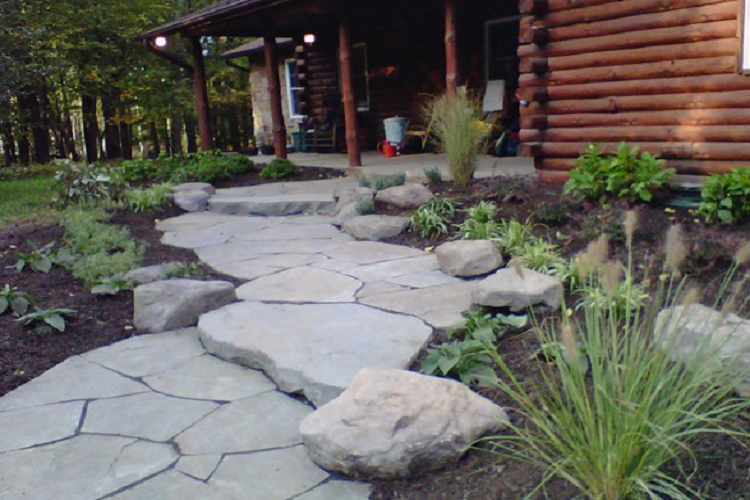A natural landscape creates harmony with its surroundings. Whether you are a landscape expert or a novice homeowner, you will agree that maintaining a natural landscape is both aesthetically pleasing and challenging. Natural landscaping allows elements to blend together seamlessly, mimicking nature’s beauty. No matter whether you have a small backyard or a large garden, creating a natural aesthetic will require careful planning and thoughtful execution, not to mention all the design considerations.
Table of Contents
How do you make a landscape look natural?
We will look at the essentials and fundamental techniques that make a landscape appear natural and inviting.
Three Principles of Natural Landscaping
Natural landscaping is based on three principles. Understanding these principles will allow you to make better decisions about your landscape.
Simplicity
Simple natural elements are often unified when viewed closely. When curating your landscaping ideas, look for simple patterns and arrangements.
The Sustainability of the Economy
Select native plants and materials well-adapted for local soil and climate conditions. This will ensure seamless integration and sustainability.
Harmony
It is important to match elements with their surroundings. Avoid putting anything in your home or surrounding area that is not compatible with other things.
Organic Shapes & Patterns
Nature is characterized by its inherent irregularity and flow. You’ll also find order, symmetry, and balance. Use organic patterns and shapes to create irregularity in your landscape. Curved paths are better than straight pathways. The irregular shape of flower beds can add an element of natural flow to any garden or backyard design. A wavy border creates a natural appearance and is also more visually appealing. Add depth and dimension by incorporating gentle slopes with varying heights and planting layers. This mimics the natural topography.
Plants that give a Natural Look
Select your plants to create a natural look in your garden. Remember that how you arrange your plants is equally important. Some natural plant communities, for example, are found in groups. Recreate the random spacing found in nature instead of planting in a robotic and calculated way. Intermingle species to create a more realistic and organic landscaping. Limit your choice to local species adapted to the environment. Choose plants that need minimal maintenance and intervention if you don’t have much time. You’d be amazed at the variety of plants available in each region. When selecting your plants, consider the growth habits, textures, and colors of the plants, as well as seasonal interest. A diverse selection of plants can help create a pleasing composition.
Natural Elements & Materials
Natural landscaping is enhanced by the use of stone, wood, and gravel. These materials also improve the look of the exterior and landscape in general. Local materials that match the rest of your setup, such as building materials or natural flora, can be sourced. Incorporate natural features into your landscaping, including rock formations and water features. It is important to match your hardscape with the landscaping. It can be challenging to achieve, but you can explore different materials and alternatives to create a more natural look.
Don’t forget about the floor!
Use mulch and groundcovers that are 100% organic. They will mimic the forest floor. This is something you might not want to go too far with. We recommend using a subtle but natural ground cover to keep things more natural and promote a harmonious and cohesive landscape design.
This post was written by a professional at Radiant LDB. Radiant LDB proudly provides landscaping services, including landscape design and installation services, for folks throughout Northern Colorado. We are a family-owned and operated company based in Fort Collins, and we’re dedicated to creating picturesque landscapes for our neighbors throughout the region. Click here to learn more!

